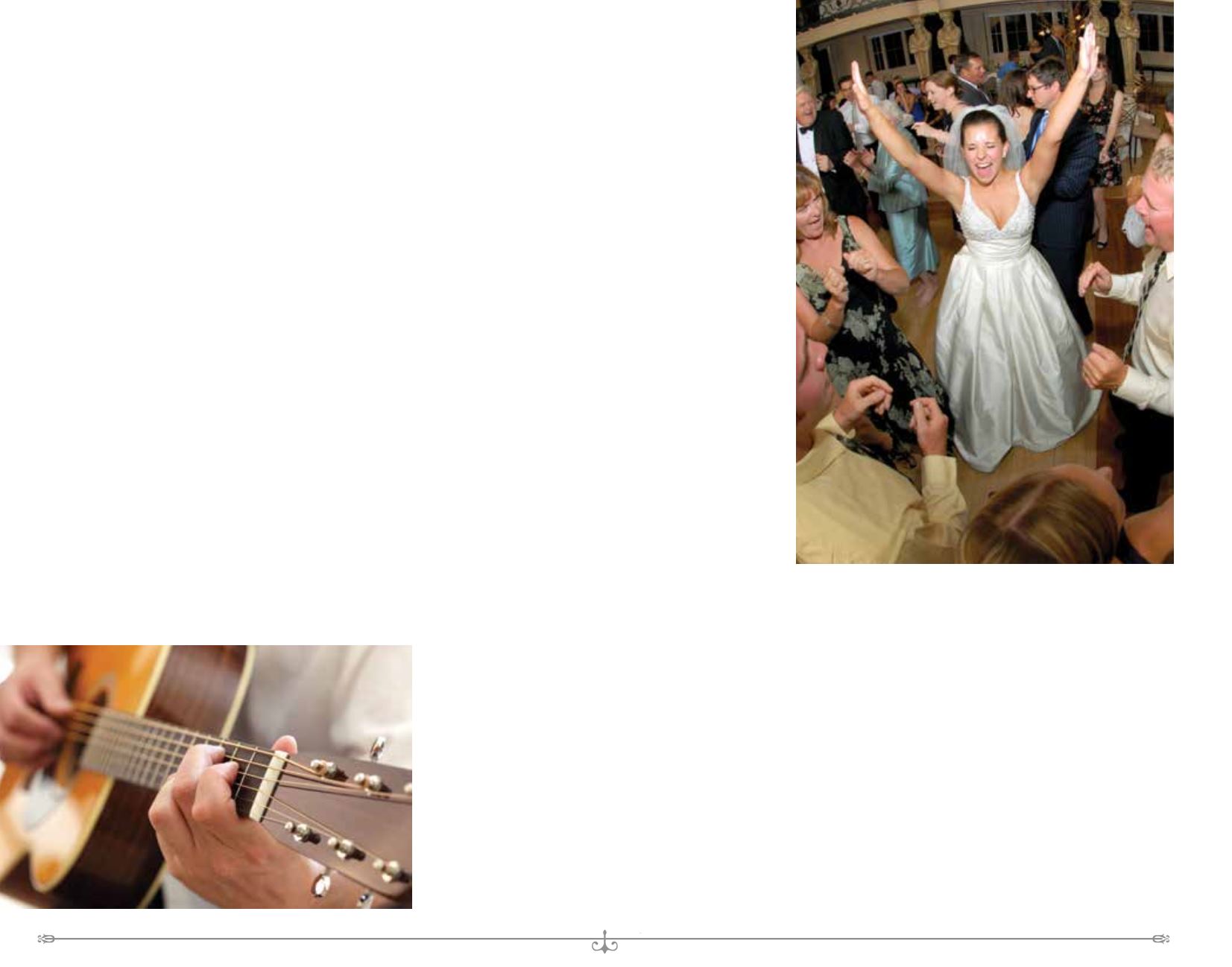

C H I C A G O W E D D I N G & P A R T Y R E S O U R C E
W W W . C H I C A G O W E D D I N G R E S O U R C E . C O M
48
M U S I C , D J ’ S & E N T E R T A I N M E N T
Do you ever wish your life could have the perfect
soundtrack? Well, your wedding can. From the soft tones
of the prelude to the lively dance music of the reception, to
create just the right sound for your wedding you have to
balance the progression of the events with your preferences.
Whether you lean toward the contemporary or the
traditional, the first step is to know the stages of the
wedding and the mood you want to create for each.
THE CEREMONY
Music for the ceremony is not limited to when the bride
walks down the aisle. First there’s the prelude, about 15 to
20 minutes of light music while the guests arrive and are
seated. Then the processional as the bridal party enters.
Next, the bridal march. Last, there’s the recessional as the
bride and groom walk back up the aisle and the postlude as
the guests depart.
For the ceremony, the two most important choices you have
to make are the type of musicians you want to play and
the tune for the bridal march. Always popular are a piano,
organ or string quartet. However, a woodwind ensemble,
classical guitar or harp is a common substitute. Strings are
great for outdoor occasions because the instruments are
portable and don’t need amplification, but you should be
aware that some string musicians may refuse to play if there
is moisture in the air or the temperature falls too low.
Mainstays of the bridal march are classical pieces, such
as Wagner’s “Bridal Chorus (“Here Comes the Bride”),
but don’t hesitate to walk to a different beat. Ask your
musicians what other tunes they would recommend for
your grand march, but if you’re getting married in a house
of worship, double-check with the officiant before making a
final decision. Some locations may not allow secular works.
A MELODIC TRANSITION
If you are having a cocktail hour between the ceremony
and the reception, you have several options. If the reception
and ceremony are at the same location, consider hiring the
musicians from the ceremony for the cocktail hour, too.
However, if you’re hiring a band, the band may also include
a jazz trio or another type of small instrumental group in
their pricing. This is a great way to get two types of music
for the price of one, while also mixing up the beat during
the cocktail hour.
Then, once your guests are seated for dinner, don’t let the
entertainment fade away. Post-dinner dance or specialty-
singer shows always are a hit. There are salsa dancers,
flamenco dancer, mariachi bands – there’s a lot you can do.
Sometimes the hosts want swing lessons for their guests or
even performances by impersonators of famous singers.
And this is all before the party really even gets rolling.
LET’S DANCE!
The last big choice you have to make is between a band
and a DJ. Overall, expect approximately 10 percent of your
wedding budget to go toward music, but here is where
prices can vary widely. Live music always is exciting, but
the cost of a band ranges from a few thousand dollars to
many thousand dollars. If you want to hear your favorite
hits exactly as they were recorded, DJs typically charge
anywhere from $500 to $2,500. Mixing live entertainment
with a DJ is a trendy option if you have the desire and it fits
into your budget.
Whichever you choose, though, make sure either the
bandleader or the DJ understand your preferences. If you
don’t like opera or you don’t like rap, make sure you let
them know. However, let the DJ or the band do their job
and gauge the crowd for the music selection.
Experts recommend a maximum of ten “request” songs to
be played throughout the evening. That way when you hear
them throughout the night, they’re even more special for
you.
© CTW Features
A Little Song and Dance
PERFECT TUNES FOR A PERFECT DAY
By Jake Laub









